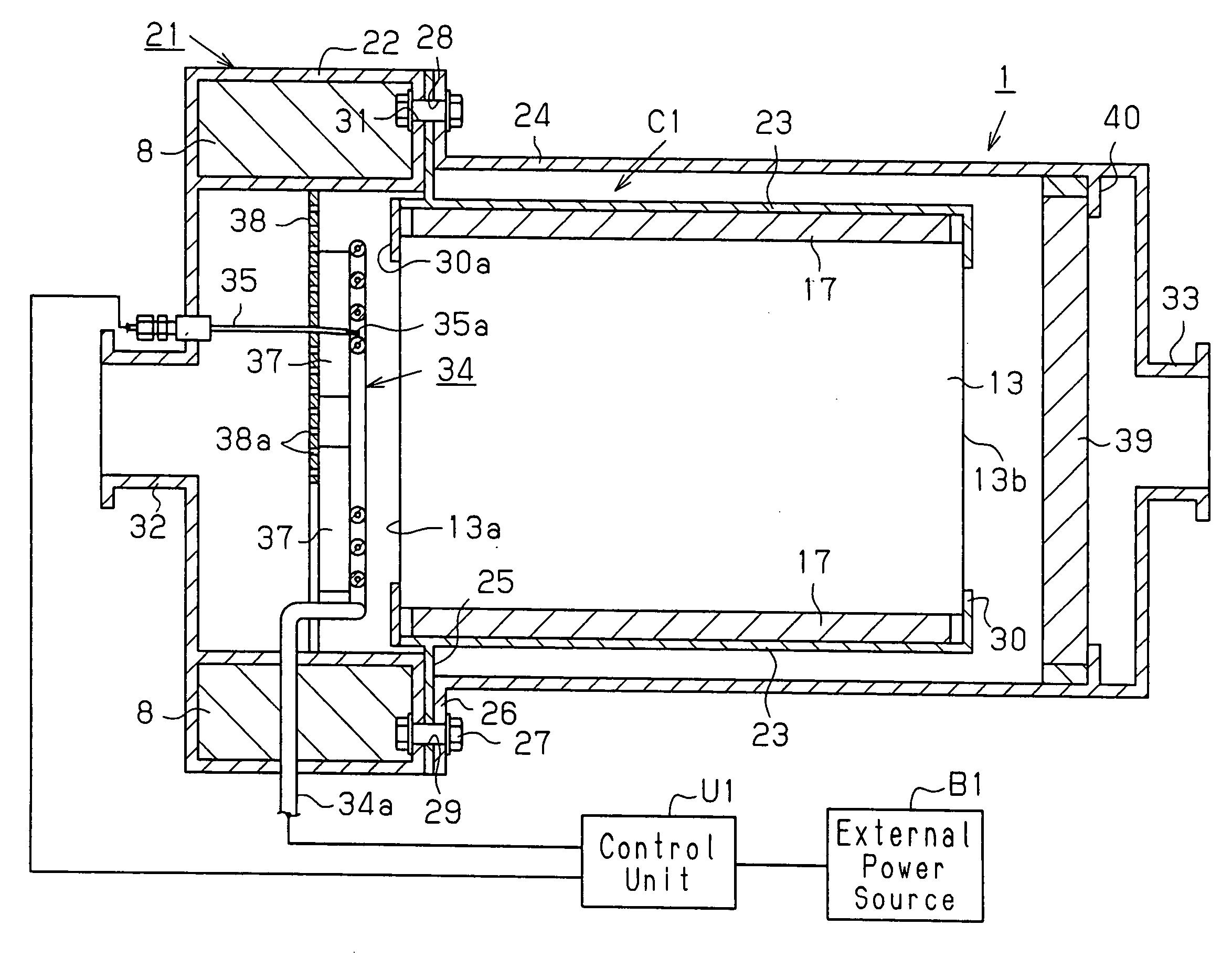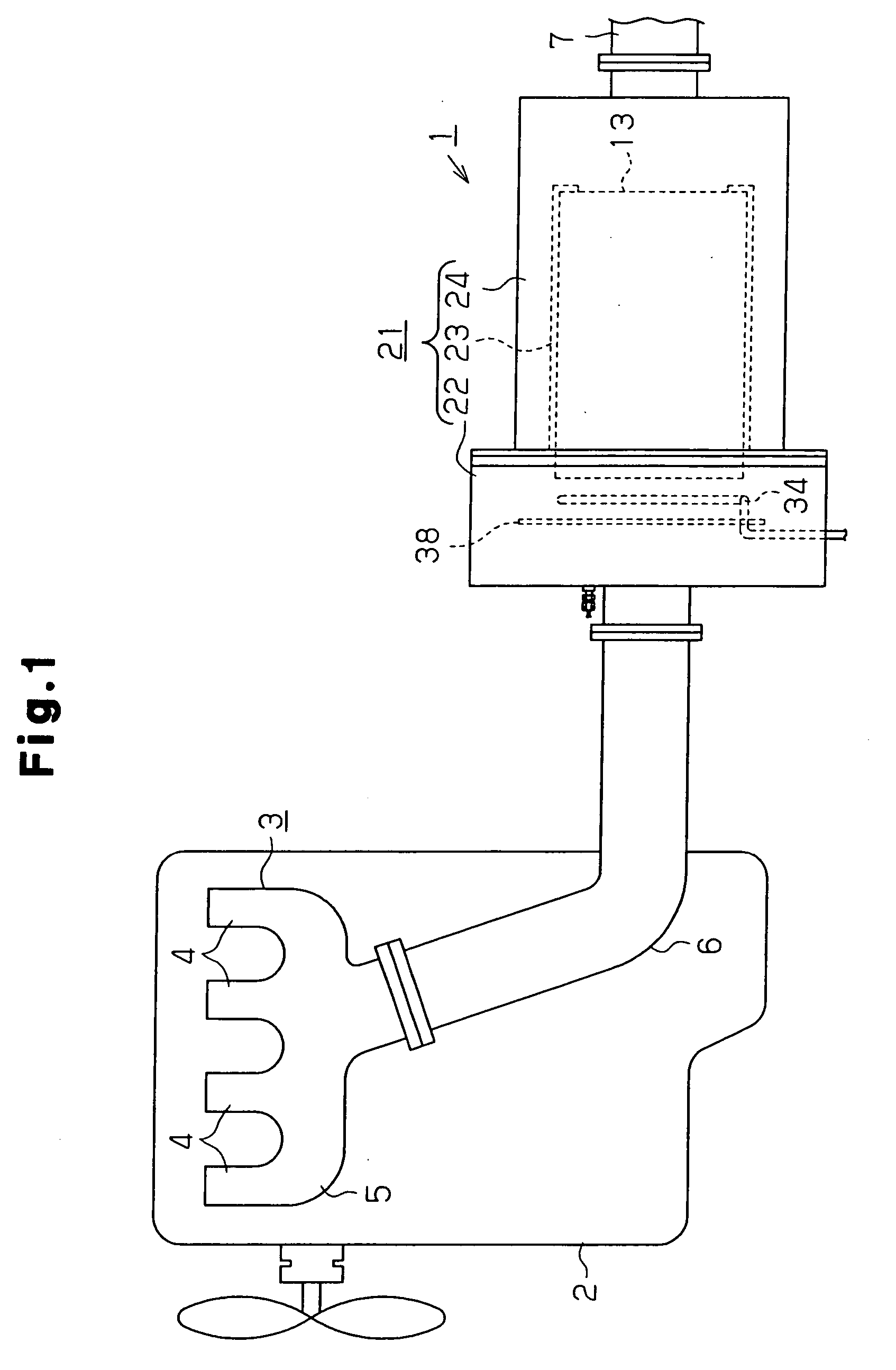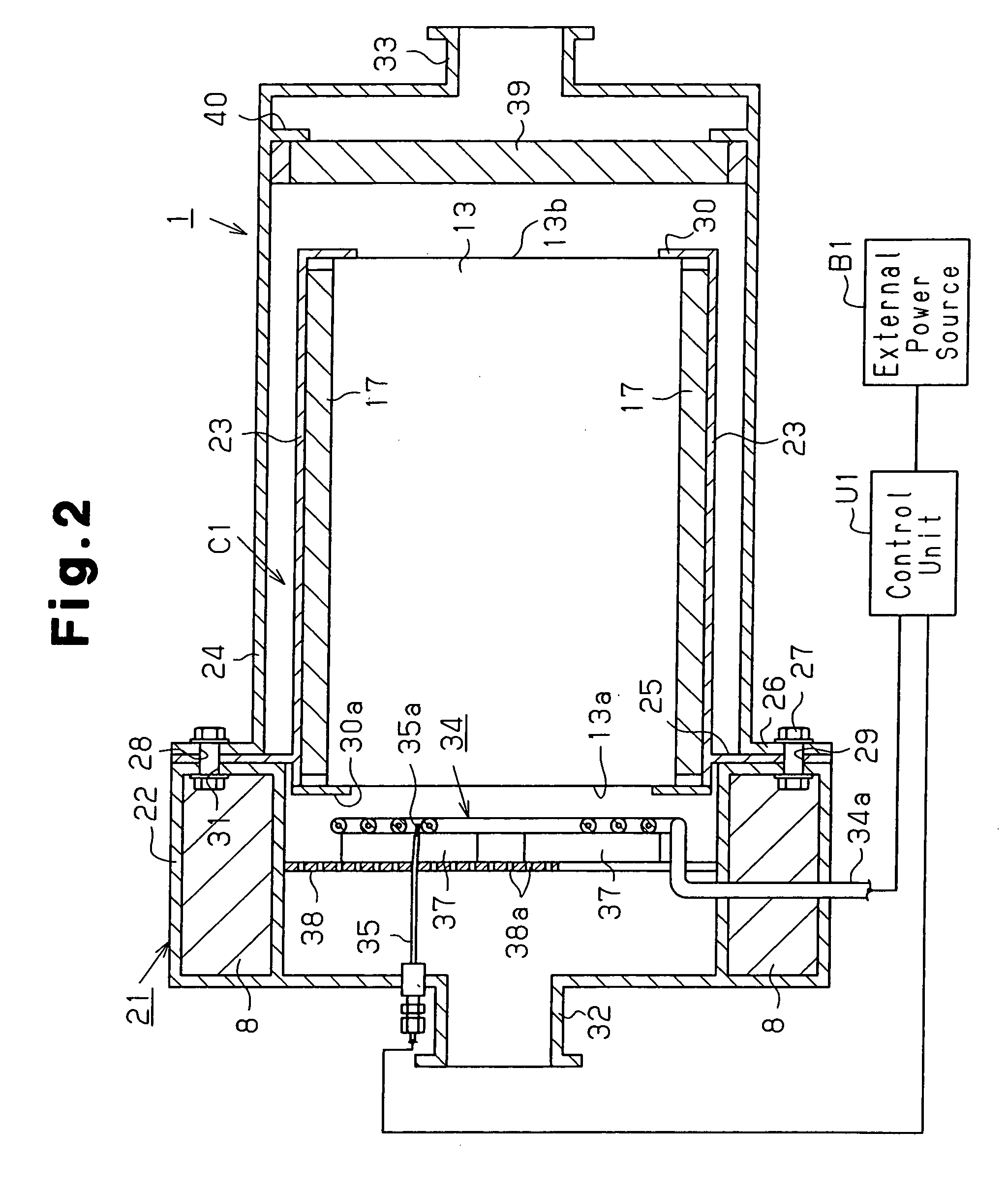Exhaust emission control device and casing structure of the control device
a technology of exhaust gas purification device and control device, which is applied in the direction of machines/engines, mechanical equipment, separation processes, etc., can solve the problems of affecting the heating of the filter, affecting the efficiency of the filter, and increasing the engine load, so as to reduce energy loss, reduce heat loss, and improve efficiency
- Summary
- Abstract
- Description
- Claims
- Application Information
AI Technical Summary
Benefits of technology
Problems solved by technology
Method used
Image
Examples
first embodiment
[0028] An exhaust gas purifying device 1 according to the present invention will hereafter be described with reference to FIGS. 1 to 5.
[0029] As illustrated in FIG. 1, the exhaust gas purifying device 1 purifies exhaust gas discharged by a diesel engine 2, which serves as an internal combustion engine. The diesel engine 2 includes a plurality of non-illustrated cylinders. A branch 4 of a metal exhaust manifold 3 is coupled to each of the cylinders. The branches 4 are connected to a manifold body 5. Thus, the exhaust gas sent from each of the cylinders is concentrated at one point.
[0030] A first exhaust pipe 6 and a second exhaust pipe 7, which are formed of metal, are disposed at a downstream side of the exhaust manifold 3. An upstream end of the first exhaust pipe 6 is coupled to the manifold body 5. The exhaust gas purifying device 1 is located between the first exhaust pipe 6 and the second exhaust pipe 7.
[0031] With reference to FIG. 2, the exhaust gas purifying device 1 inclu...
fourth embodiment
[0066] Also, the fourth embodiment is not provided with the punching plate 38 such that the configuration becomes simple.
[0067] In a fifth embodiment illustrated in FIG. 9, the support piece 30a, which is otherwise formed at the upstream end portion of the inner case 23, is not provided, as is clear from comparison with the first embodiment. The fifth embodiment thus has the operational effects of the first embodiment, except for that of the support piece 30a.
[0068] The exhaust gas purifying devices of the illustrated embodiments were subjected to an operational test. One cycle of the test was defined by sending exhaust gas to each of the devices, heating the filter by the heater, and supplying supporting air for burning the soot. The test included ten cycles. The test results are shown in Table 1. The longitudinal dimension of the filter 13 was 150 millimeters.
TABLE 1Up-Down-TemperatureInsulatorstreamstreamSupportPunchingDifferenceCorrosionEmbodimentDrawingBlockerBlockerStructur...
PUM
| Property | Measurement | Unit |
|---|---|---|
| ignition temperature | aaaaa | aaaaa |
| temperature | aaaaa | aaaaa |
| time | aaaaa | aaaaa |
Abstract
Description
Claims
Application Information
 Login to View More
Login to View More - R&D
- Intellectual Property
- Life Sciences
- Materials
- Tech Scout
- Unparalleled Data Quality
- Higher Quality Content
- 60% Fewer Hallucinations
Browse by: Latest US Patents, China's latest patents, Technical Efficacy Thesaurus, Application Domain, Technology Topic, Popular Technical Reports.
© 2025 PatSnap. All rights reserved.Legal|Privacy policy|Modern Slavery Act Transparency Statement|Sitemap|About US| Contact US: help@patsnap.com



